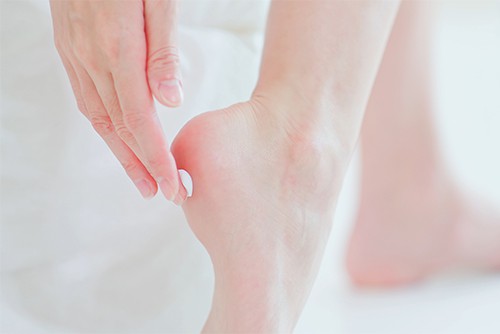One of the most common issues that we see here at our clinic, as the temperature gets colder, is dry heels. In most cases, dry heels are not severe, with it only being the superficial overlying skin that is dry. In very bad cases, we see that the heels are not only dry but there is overlying callus. What can end up happening in prolonged cases of dry heels is that the callus will begin to fissure and will bleed. Any opening within your skin allows an entry way for bacteria to come inside and cause a possible infection. In our high-risk population, such as patients with diabetes or who are immunocompromised, this can be limb threatening or even life threatening.
Diabetic patients are the most at risk for dry heels because neuropathy affects the nerves that control your sweat glands which results in your feet not sweating as much. As a result of this lack of sweating, the skin becomes dryer and it more prone to fissuring. The solution is simple, moisturize your feet! You do not require any special lotions or creams in most cases.
Any moisturizer that you normally use on the rest of your body is perfectly adequate for the bottom of your feet. In severe cases, we like to recommend creams that contain a percentage of Urea. Urea is a keratoplastic and it helps to shed that excess layer of skin build up. We recommend creams with Urea percentages ranging from 5-20%. Our most recommended creams include Dermal Therapy, Urisec and Uremol. Keep those heels hydrated this winter!

